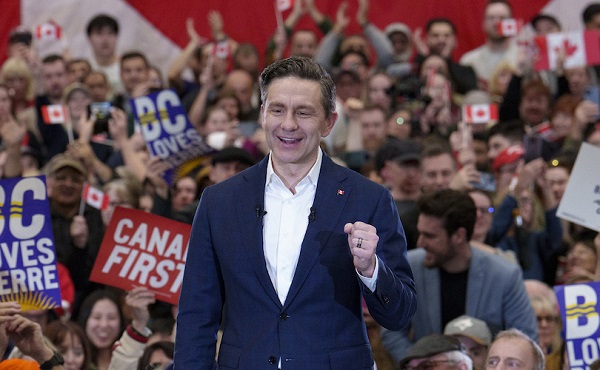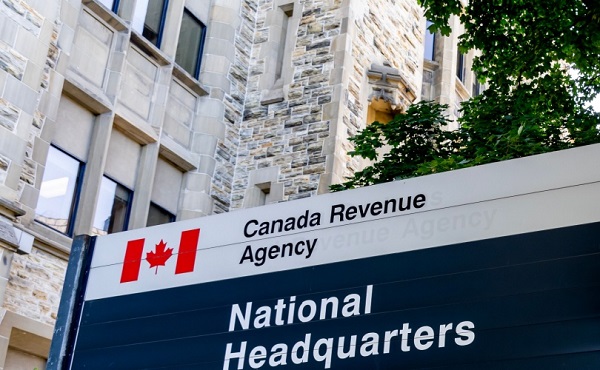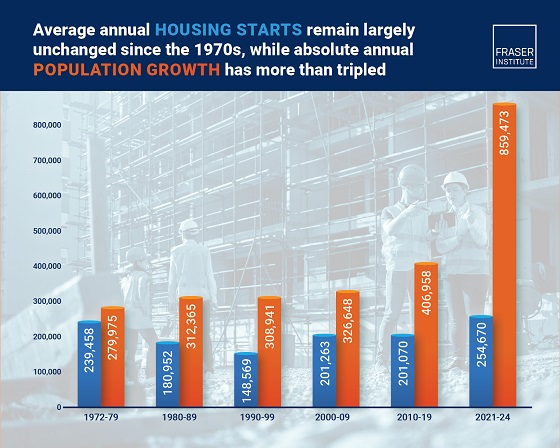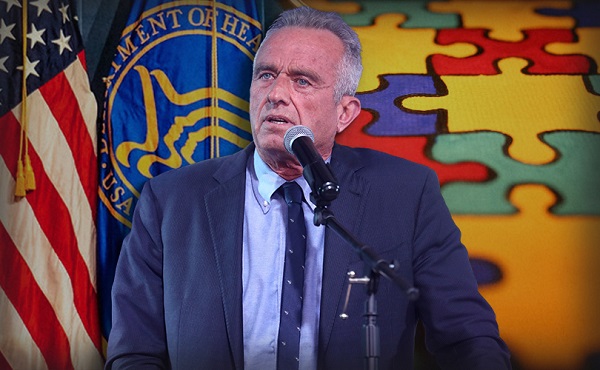Business
The SBF Scandal: The Players and the Money

From the Brownstone Institute
BY
The complexities of the FTX scandal with Sam Bankman-Fried at the helm boggles the mind. Unlike the Madoff scandal, which was incredibly simple, the funding, influence, and political networks sounding the $32 billion collapse of FTX is byzantine by design.
Just have a look at the org chart of the company to get a sense. It’s all the better for avoiding oversight.

What we really need in the months or even years in which it will take to sort all of this out is some kind of key to the major players. What follows is a list which we’ve put together in order of network importance for easy reference. This small effort is made necessary because there seems to be very little attention being given to the entire SBF empire, both in terms of the players with whom he worked and where the money ended up.
It’s nowhere near being a guide to the fullness of the networks of funding and influence, and can only begin to hint at the real story of what was really behind this magic bean factory in the Bahamas. Their operations and networks are deliberately obscure and fan out over many countries, institutions, and individuals. There is a strange silence in the air about the details other than the general observation that Sam Bankman-Fried was up to no good.
And yet there were obviously many people involved. It’s probable that the main point was to fund political causes in a way that gets around federal election law, as the indictment suggests in count eight. However, a close examination of the networks keeps coming back to the strange theme of pandemic planning and support for various methods of controlling the population in the name of controlling infectious disease. Aside from political donations, this was a central concern. What that has to do with a crypto exchange is another matter.
All of which should raise a question given the time of the life of FTX (2019-2022): to what extent was the network surrounding this institution useful in providing back-channel funding support for (and lack of opposition to) the most unprecedented attack on human liberty in our lifetimes? This question applies to both the direct political contributions and the various other donations to institutions and individuals.
Corrections to this list are welcome.
Family
Sam Bankman-Fried: Went to MIT, worked for Centre for Effective Altruism (fundraising 2017) and started Alameda Research in November 2017, and then the crypto trading company FTX two years later, which he ran until 2022 when it all collapsed after becoming the second-largest donor to Democrats ($38M).
Barbara Helen Fried: mother of Sam, Harvard Law graduate, professor at Stanford University, booster of Effective Altruism, and founder of Mind the Gap, a secretive political action committee in Silicon Valley.
Alan Joseph Bankman: father of Sam, Yale Law graduate and later clinical psychologist, law professor at Stanford, and author and expert on tax law.
Linda Fried: Sam’s aunt on his mother’s side and Dean of School of Public Health at Columbia University and on the board of the World Economic Forum’s Global Agenda Council on Aging.
Gabriel Bankman-Fried: Sam’s brother who ran Guarding Against Pandemics, a lobbying organization supporting “pandemic planning” also known as lockdowns and vaccine mandates. It has a Capitol Hill headquarters that cost $3.3 million. He previously served on a Congressional staff.
Associates
Caroline Ellison: Schooled at Stanford, she is daughter of Glenn Ellison and Sara Fisher Ellison, both professors at MIT. She became CEO of Sam’s Alameda Research and reported girlfriend of Sam’s.
Sara Fisher Ellison and Glenn Ellison: Caroline’s mother is professor of economics at MIT with a research specialization in the pharmaceutical industry while her father has written at least four papers on epidemiological modeling.
Nishad Singh: former MIT roommate of Sam’s who is said to have built the FTX platform. He seems to have left the Bahamas for India.
Zixiao “Gary” Wang: Co-founder with Sam of FTX and Alameda. He graduated from MIT and worked for Google. Beyond that hardly anything is known about him. He seems to have left the Bahamas and is reported to be in Hong Kong.
Ryan Salame: Graduate of UMass-Amherst and head of FTX Digital Markets, plus proprietor of R Salame Digital Asset Fund through the Berkshire Taconic Community Foundation, allegedly for charitable purposes.
William David MacAskill: real name Crouch, William is an author and philosopher and founder of the Centre for Effective Altruism and a close colleague of Sam’s. He served on the board of FTX Future Fund until it collapsed. He is a media personality who gives TED talks and is a leader purveyor of the view that one should get very rich and give it away.
Funded Institutions and Individuals (some taken from here)
Together Trial: This elaborate trial of therapeutics ended up inveighing against Ivermectin and Hydroxychloroquine and was generously funded by FTX. But that has been scrubbed from the public website. This is a continuing problem.
Moncef Slaoui: The head of Operation Warp Speed, he received $150,000 from FTX to write SBF’s autobiography, according to a Washington Post investigation.
HelixNano: A vaccine company that claims to be developing mutation-resistant vaccines, which received $10M in funding from FTX Future Fund, according to a Washington Post investigation.
Johns Hopkins Center for Health Security: This institution ran the Event 201 lockdown tabletop exercise in 2019, and received at least $175,000 for a single employee, from FTX coffers. We don’t know the full extent but it was enough for the head of the Center to defend Sam and FTX in public. Nor do we know Alameda Research’s funding reach of this institution.
Guarding Against Pandemics: Run by Sam’s brother Gabriel, this 501c4 gave at least $1M to campaigns in 2022. We do not know how much money Alameda/FTX funneled to this institution. Sam fequently recommend it as a target for charitable giving.
Protect Our Future: run by the two brothers, this PAC gave $28M to candidates in the 2022 cycle. We do not know how much Alameda/FTX gave.
Center for Innovation in Global Health, Stanford University: FTX and its network gave $1.5M to the institution.
ProPublica: A grant of $5M from FTX Future Fund. Other reports say $27 million.
Centre for Effective Altruism: FTX Future fund gift of $14M
Effective Ideas Blog: It promised to pay $1K to good blogs, and its Twitter frequently links to other institutions and individuals in the FTX network. Funded by Future Fund: $900K
Piezo Therapeutics: “Work on technology for delivering mRNA vaccines without lipid nanoparticles with the aim of making vaccines more safe, affordable, and scalable.” FTX gave $1M
Council on Strategic Risks: “a project which will develop and advance ideas for strengthening regional and multilateral cooperation for addressing biological risks.” $400K from FTX
AVECRIS Pte. Ltd: “support the development of a next-generation genetic vaccine platform that aims to allow for highly distributed vaccine production using AVECRIS’s advanced DNA vector delivery technology.” $3.6M from FTX
University of Ottawa: “a project to develop new plastic surfaces incorporating molecules that can be activated with low-energy visible light to eradicate bacteria and kill viruses continuously.” FTX gave $250K
1Day Sooner: “work on pandemic preparedness, including advocacy for advance market purchase commitments, collaboration with the UK Pandemic Ethics Accelerator.” FTX gave $300K.
SAGE: “creation of a pilot version of a forecasting platform, and a paid forecasting team, to make predictions about questions relevant to high-impact research.” FTX gave $700K
Longview: “global priorities research, nuclear weapons policy, and other longtermist issues.” Advisor: William MacAskill. FTX gave $15M
Confirm Solutions: “support development of statistical models and software tools that can automate parts of the regulatory process for complex clinical trials.” FTX gave $1M
Lightcone Infrastructure: “ongoing projects including running the LessWrong forum, hosting conferences and events, and maintaining an office space for Effective Altruist organizations.” FTX gave $2M
Rational Animations: “the creation of animated videos on topics related to rationality and effective altruism to explain these topics for a broader audience.” FTX gift: $400K
Giving What We Can: “to create a world in which giving effectively and significantly is a cultural norm.” FTX gift: $700,000
The Atlas Fellowship: scholarships for talented and promising high school students to use towards educational opportunities and enrolling in a summer program. FTX gift: $5M
Constellation: “support 18 months of operations for a longtermist coworking space in Berkeley.” FIX coughed up $3.9M
Longview Philanthropy: “creating a longtermist coworking office in London.” FTX committed $2.9M
Long Term Future Fund: “longtermist grantmaking.” FTX committed $3.9M
OurWorldinData: graphs and charts portal. FTX committed $7.5M
Institute for Progress: “research and policy engagement work on high-skilled immigration, biosecurity, and pandemic prevention.” FTX was in for $480K. Additional support came from Emergent Ventures, which was modeled on Fast Grants that funded Neil Ferguson’s pandemic modeling at Imperial College London, which seems to have an entangled relationship with the SFB empire, one yet to be fully disclosed.
Conclusion
What is listed above only scratches the surface of the admitted $160 million given out, but the promise had been for fully $1 billion to go to various nonprofits in this network that seems to be supported or even founded in order to receive money from FTX-connected institutions.
We could only list some of the names and a fraction of the dollar amounts. There are many other institutions and names that could be part of this list but we lacked enough documentation to verify for this article. There is still the task of listing all political campaigns that were in receipt of the money as well as the public-relations boosters of the whole effort.
Building off the success of Bill Gates, Sam Bankman-Fried, and his many associates, clearly saw philanthropy as the path to influence, power, and protection. At the same time, many nonprofit organizations saw an opportunity too; to build their own empires through promised millions and billions from a crypto genius in the Bahamas who had an unusual passion for pandemic planning.
For three years, many of us have wondered how it came to be that the critics of lockdowns and mandates were so few and far between. There are surely many explanations but, as usual, it helps fill in the dots to follow the money.
2025 Federal Election
Canada drops retaliatory tariffs on automakers, pauses other tariffs

 MxM News
MxM News
Quick Hit:
Canada has announced it will roll back retaliatory tariffs on automakers and pause several other tariff measures aimed at the United States. The move, unveiled by Finance Minister François-Philippe Champagne, is designed to give Canadian manufacturers breathing room to adjust their supply chains and reduce reliance on American imports.
Key Details:
- Canada will suspend 25% tariffs on U.S. vehicles for automakers that maintain production, employment, and investment in Canada.
- A broader six-month pause on tariffs for other U.S. imports is intended to help Canadian sectors transition to domestic sourcing.
- A new loan facility will support large Canadian companies that were financially stable before the tariffs but are now struggling.
Diving Deeper:
Ottawa is shifting its approach to the escalating trade war with Washington, softening its economic blows in a calculated effort to stabilize domestic manufacturing. On Tuesday, Finance Minister François-Philippe Champagne outlined a new set of trade policies that provide conditional relief from retaliatory tariffs that have been in place since March. Automakers, the hardest-hit sector, will now be eligible to import U.S. vehicles duty-free—provided they continue to meet criteria that include ongoing production and investment in Canada.
“From day one, the government has reacted with strength and determination to the unjust tariffs imposed by the United States on Canadian goods,” Champagne stated. “We’re giving Canadian companies and entities more time to adjust their supply chains and become less dependent on U.S. suppliers.”
The tariff battle, which escalated in April with Canada slapping a 25% tax on U.S.-imported vehicles, had caused severe anxiety within Canada’s auto industry. John D’Agnolo, president of Unifor Local 200, which represents Ford employees in Windsor, warned the BBC the situation “has created havoc” and could trigger a recession.
Speculation about a possible Honda factory relocation to the U.S. only added to the unrest. But Ontario Premier Doug Ford and federal officials were quick to tamp down the rumors. Honda Canada affirmed its commitment to Canadian operations, saying its Alliston facility “will operate at full capacity for the foreseeable future.”
Prime Minister Mark Carney reinforced the message that the relief isn’t unconditional. “Our counter-tariffs won’t apply if they (automakers) continue to produce, continue to employ, continue to invest in Canada,” he said during a campaign event. “If they don’t, they will get 25% tariffs on what they are importing into Canada.”
Beyond the auto sector, Champagne introduced a six-month tariff reprieve on other U.S. imports, granting time for industries to explore domestic alternatives. He also rolled out a “Large Enterprise Tariff Loan Facility” to support big businesses that were financially sound prior to the tariff regime but have since been strained.
While Canada has shown willingness to ease its retaliatory measures, there’s no indication yet that the U.S. under President Donald Trump will reciprocate. Nevertheless, Ottawa signaled its openness to further steps to protect Canadian businesses and workers, noting that “additional measures will be brought forward, as needed.”
Business
DOGE Is Ending The ‘Eternal Life’ Of Government


From the Daily Caller News Foundation
By David Bossie
In his 1964 “A Time For Choosing” speech, Ronald Reagan famously said, “a government bureau is the nearest thing to eternal life we’ll ever see on this earth.” And for more than 60 years, President Reagan’s words have proven to be true. However, with the historic re-election of President Donald Trump and the creation of the Department of Government Efficiency (DOGE) under the leadership of Elon Musk, the Gipper’s contention is finally being challenged – and not a moment too soon.
The Trump Administration inherited a horribly bloated federal government in dire need of common sense streamlining from top to bottom. For decades, the executive branch has expanded at an incomprehensible rate and along with it, so has waste, fraud, and abuse. Presidents on both sides of the aisle have made promises to tighten the government’s belt, shrink the bureaucracy, and return power to the people where it belongs. Those efforts for the most part – however well-intentioned – never got off the ground. The reality is that when politicians have been forced to choose between a legislative priority and cutting government spending, cuts are always the first casualty. But currently, with our $36 trillion national debt spiraling out of control, reining in the size and scope of government is no longer a choice, but a necessity.
President Trump is the perfect leader for these trying times. He’s battletested and fears nothing – and no challenge is too large. Whether it’s securing the border, growing the economy, forging peace in Ukraine and the Middle East, or negotiating fair trade deals, this president is on a mission to save America. And if any chief executive is going to have success at deconstructing the administrative state, it’s Trump the steel-spined change agent. The shadowy deep state doesn’t scare him, the biased liberal media can’t intimidate him, and this time there are no phony partisan investigations aiming to sidetrack him. Trump made a promise to bring fiscal responsibility back to governing, and along with Musk and DOGE, they’re finally conducting the “audit with teeth” that the American people have been waiting for, and their hard work is turning out to be infectious.
Dear Readers:
As a nonprofit, we are dependent on the generosity of our readers.
Please consider making a small donation of any amount here. Thank you!
With each passing day, a different member of the cabinet is announcing a new cut, discovering a duplicative program, or updating an antiquated system to steer us away from the fiscal cliff that’s rapidly approaching. When the president also happens to be a highly successful businessman, making the business operate more smoothly and for less money is the name of the game. Trump has brought this mindset to the White House and according to recent polling 77 percent favor a full review of government spending.
President Trump is going back to the basics that have become taboo in Washington, like asking fundamental questions about whether an agency has been successful in its mission or if a program is still necessary. In the case of the Education Department, Trump sees an emergency and is not willing to kick the can down the road any longer. The president believes that education excellence for our children is essential so America can compete for generations to come. Drastic reform is long overdue and that means moving education decisions back to state and local officials – and parents. That’s why President Trump is taking the steps to confront the failed status quo and close the underperforming department so we can turnaround lackluster public schools and low-test scores.
Similarly, with the decision to end USAID and slash foreign aid, Trump and DOGE are simply putting America first. America is handing out billions upon billions in taxpayer dollars around the globe on programs that should be spent on fixing our own domestic problems. The plan to decentralize and modernize the Agriculture Department is another great example of thinking outside the box. The American people understand the rationale that downtown Washington, D.C. is the last place decisions about farming should be made. Relocating the department to various hubs around the heartland is common sense.
Additionally, the announcement that the Department of Health and Human Services will cut 20,000 full-time employees is part of President Trump’s vision to “right-size the federal government and unleash the private sector again” in the words of Treasury Secretary Scott Bessent. And word that the Trump Administration is planning to work with Congress to finally defund National Public Radio and the Public Broadcasting Service is welcome news to millions of Americans who believe sending taxpayer funds to biased news outlets is wrong.
DOGE is also doing courageous work at the Social Security Administration (SSA). The amazing efforts to identify individuals who are either deceased, in the country illegally, or otherwise ineligible will help stave off the program’s insolvency, which experts predict is only ten years away. When a DOGE official disclosed that 40 percent of the calls made to SSA are from would-be fraudsters trying to exploit the system, it’s become all too obvious that new safeguards must be adopted.
When it comes to the question of how much money DOGE will ultimately end up saving taxpayers, in the context of our $36 trillion debt crisis, the more the better. However, the overall change in mindset – forcing government to operate efficiently and responsibly like businesses and families – and passing that mindset onto future administrations is perhaps the most critical shift that can be made. In fact, in an ideal scenario, every state, county, and city would have its very own DOGE operation. We must get serious about cutting government waste now or we’ll go bankrupt. That’s just the reality of the situation and President Trump knows it.
David Bossie is the president of Citizens United and served as a senior adviser to the Trump-Pence 2020 campaign. In 2016, Bossie served as deputy campaign manager for Donald J. Trump for President and deputy executive director for the Trump-Pence Transition Team.
-

 illegal immigration2 days ago
illegal immigration2 days agoDespite court rulings, the Trump Administration shows no interest in helping Abrego Garcia return to the U.S.
-

 2025 Federal Election2 days ago
2025 Federal Election2 days agoEuthanasia is out of control in Canada, but nobody is talking about it on the campaign trail
-

 2025 Federal Election2 days ago
2025 Federal Election2 days agoConservative MP Leslyn Lewis warns Canadian voters of Liberal plan to penalize religious charities
-

 2025 Federal Election17 hours ago
2025 Federal Election17 hours agoRCMP Whistleblowers Accuse Members of Mark Carney’s Inner Circle of Security Breaches and Surveillance
-

 2025 Federal Election2 days ago
2025 Federal Election2 days agoHousing starts unchanged since 1970s, while Canadian population growth has more than tripled
-

 Education2 days ago
Education2 days agoSchools should focus on falling math and reading grades—not environmental activism
-

 Autism1 day ago
Autism1 day agoAutism Rates Reach Unprecedented Highs: 1 in 12 Boys at Age 4 in California, 1 in 31 Nationally
-

 Health1 day ago
Health1 day agoTrump admin directs NIH to study ‘regret and detransition’ after chemical, surgical gender transitioning







